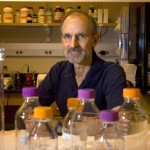Plasma cells live in our bone marrow. Their job: to make antibodies that protect us from bacteria and viruses. But if those plasma cells grow unchecked, that unchecked growth leads to multiple myeloma.
Multiple myeloma is a type of cancer that results in lytic bone disease, or holes in the bones. What’s more, the cancerous cells crowd out normal bone marrow resulting in anemia or a low white count, leaving a person vulnerable to infections.
Sagar Lonial, MD, an oncologist at Winship Cancer Institute, Emory University, treats people with multiple myeloma. The prognosis for people with this type of cancer is poor; however, researchers are gaining on the disease. Twenty years ago, the survival rate was two to three years; now, it’s four to five.
Lonial says one of the keys to improving patients’ prognosis is increasing their enrollment in clinical trials and better access to life-extending drugs.










